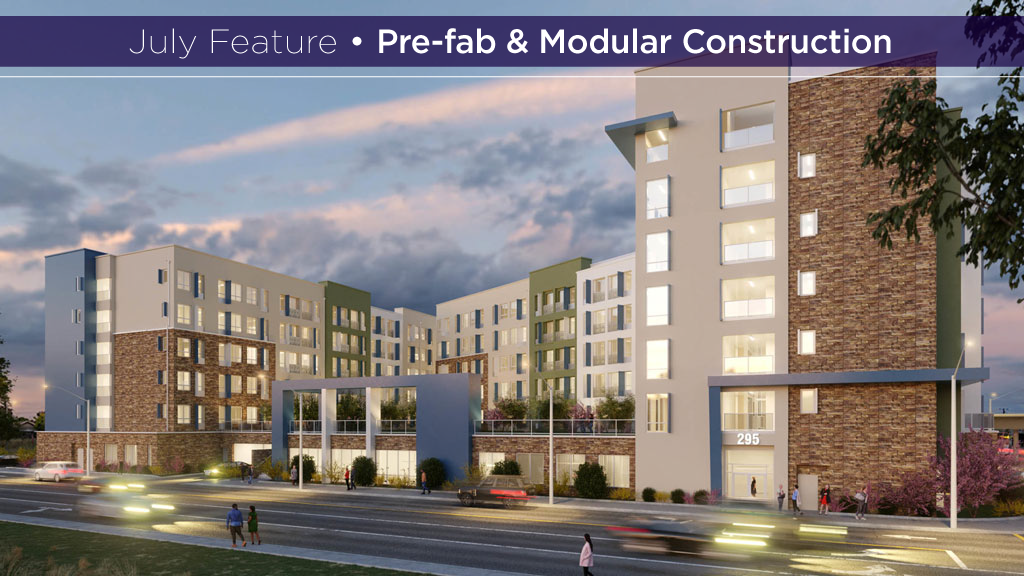So many factors suggest a promising future for modular home construction in North America.
There’s an urgent need for affordable housing, a shortage of skilled labour and the potential to optimize building process efficiencies in order to achieve higher profits.
Yet modular solutions in North America lag far behind many other countries.
Over 80 per cent of single family homes in Sweden and 28 per cent in Japan . Yet today, less than one per cent of Canadians live in modular homes. In fact, the Modular Building Institute modular construction accounted for just over six per cent of total square footage for all new North American construction in 2022.
Change away from past processes is not well accepted in construction. This resistance to change is linked to the well-documented lack of industry productivity over past decades.
Modular construction encompasses many different processes.
In its simplest form, modularization means fabrication by workers in a factory environment instead of cutting and hammering onsite. This could involve the production of basic pre-made components like trusses, I-joints or insulated panels.
The next level of modularization involves the manufacture of complete wall panels and floor or roof cassettes that are transported to the site and assembled. This is often called “panelization.”
Various levels of automation might be utilized in the process.
Then there is volumetric construction, when 80 to 95 per cent of construction and assembly occurs off-site in a factory setting. Modules such as bathroom pods, or even complete apartment units, hotel rooms, or sub-modules for homes, are delivered to the jobsite and craned into position.
While modular technology may be the key to solving many of the industry’s existential problems, no form of construction is easy. Modular construction has specific challenges that have often proven difficult to overcome. Several high-profile modular builders have gone bankrupt, leaving behind creditors, disillusioned investors and several thousand unemployed workers.
Common threads to failure include an excessive burn rate of start-up cash due to high overhead costs, coupled with the inability to draw in fresh capital despite strong sales. Distances between the manufacturing facility and the project site can create supply chain procurement and delivery challenges. This can add significant costs.
Other common issues include local building code and planning idiosyncrasies. These can result in delays that can interrupt production. The challenges of developing and maintaining a constant production flow can ripple into difficulties of establishing reliable supply lines. The recent uptick in inflation hasn’t helped either.
Most of the highest profile modular business failures have been homebuilders, suggesting a clue to the problem.
“If you’ve got a big set-up and a big factory, you want the same or similar house types, because every time you produce a panel you have to change the rig and all the set-up. You want to change that as seldom as possible to actually get the efficiencies,” Manny Atkinson, a director at BTP architects, told .
The most successful modularization in North America occurs when there is repeatability on a large scale.Façades for larger projects, as seen in the precast exterior panels at Mission Rock manufactured by Clark Pacific, are an excellent example.
is a 28-acre mixed-use development taking shape near San Francisco’s Oracle Park.
It encompasses appro- ximately 1,200 residential units over four buildings, of which 40 per cent are directed to low and moderate income households. Also included are 1.4-million-square-feet of commercial space and 250,000-square-feet of restaurant and retail space.
A Silicon Valley start-up launched by BJ Siegel, Apple’s former director of design, has also been greeted with enthusiasm.
Instead of offering full volumetric modular, uses a modular system of pre-designed components that can be assembled to create various building shapes and sizes.
the mass timber superstructure for Juno’s recently-completed five-storey, 24-unit apartment project in east Austin, Texas, was assembled by five workers in only five weeks.
Full volumetric modular manufacturing still holds promise, however.
Notable is a 2018 start-up called . Shipping from its highly robotic facility located in Idaho, the company has reportedly completed 17 multi-storey apartment buildings to date.
In Canada, , originally known as RCM Modular, headquartered in Saint-Benoît-Labre, Que., is another success story. RCM’s team of designers, engineers, carpenters and cabinetmakers takes an integrated approach to each project.
From its start in 2020, it now serves Québec, Ontario, the north-eastern United States and the Caribbean. One of RCM’s largest multi-residential projects to date is , a multi-storey apartment complex in Poughkeepsie, N.Y.
And if sophisticated robotic processes offer a pathway to future success, it could be modelled on a development coming from the U.S. Midwest.
has spearheaded a collective of like-minded industry members that includes German automation leader KUKA. Together they have created , claimed to be “a pre-designed automation system and complete facility design for high-volume housing production — everything an owner needs to start up, staff and operate a plant successfully.”
The correct modularization solutions for North America will be found. The pressures on the construction industry are too significant, and the productivity gains too seductive, to be ignored.



The only countries where capital intensive modularization has succeeded over the long term is in countries like Sweden and the UK, where governments have long procured a steady supply of social housing continuously over long periods of time. In countries like the USA, Canada and others, where housing demand is primarily market driven and thus subject to severe swings across economic cycles, capital-intensive approaches to modularization and vertical integration like what Katerra attempted have eventually failed due to the challenge of keeping a CapEx-heavy factory and all parts of an integrated value chain operating anywhere near capacity. This happened in the ill-fated Operation Breakthrough launched by George Romney as Head of HUD under President Nixon in the late 1960s, and we have seen it happen again more recently for Katerra, Veev, Entekra and others.